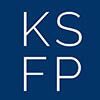I help my clients plan for the next 1-5 years. This was considered “short-term” planning in the world of personal finance. However, there is so much uncertainty in the world right now that planning for the future seems like an exercise in fantasy. Think back to a year ago… did you think 2020 would turn out like it did? Most likely, no.
I find that with increased uncertainty, planning is even more important but requires a higher degree of flexibility. It involves looking at shorter timeframes and making course corrections to the areas of your financial life you can control.
The Wall Street Journal published on article on 12/29/20 on Micro Budgets discussing how making shorter timeframe goals (a paycheck, a month) enables one to feel a greater sense of control, achieve immediate results or pivot if necessary. Achieving these micro-goals one after another can result in a feeling of a fresh start and renewed energy, which most of us could use for 2021. Studies show that setting micro-goals can rewire your brain by increasing dopamine levels each time one is set and achieved.
During the beginning of lockdowns and Covid-19, most families cut spending by ~25%. Savings accounts actually grew. As the new reality of home schooling and working remotely sank in, some families needed to invest in furnishings and changes to their homes in order to make life doable for the family. Then the holidays led to more spending. No matter what happened in 4Q2020, this is a new year. Don’t let fear and uncertainty keep you from feeling some peace of mind going forward. Creating your own micro financial plan can help.
How to create your Micro Financial Plan?
- Construct a Micro Budget. Go one month at a time. Create a budget for the next month using major categories like the following:
- Housing- mortgage, insurance, housekeeping, landscaping, property taxes, etc.
- Kids- Childcare, tuition, tutors, activities, etc.
- Utilities- gas & electricity, phone, internet, cable, water and garbage.
- Car- car payment, insurance, commute, gas, parking.
- Food- anything you eat or drink.
- Shopping- clothes, sporting goods, gifts, stuff.
- Entertainment- iTunes, digital subscriptions, Netflix, etc.
- Travel
- Medical- Doctor, pharmacy, therapy, etc.
- Other- Pets, business services, and all other spending.
At the end of the month, calculate your actual spending and compare to your budget. Were you under or over budget? What adjustments can you make for the next month? What expenses are coming up that you need to plan for?
- Determine quarterly savings goals. Normally, savings goals are expressed in annual numbers, like maximizing your 401(k) at $19,500 per year. Instead, set quarterly goals like “save $4,875 into 401(k) this quarter.” At the end of the quarter, you can look at your contributions to the account and feel like you have achieved that goal (and get a little dopamine bump).
- Focus on micro-sizing your To Do List. Keeping a mental laundry list or physical list of all the things you think you need to do can be exhausting and tie up your mental bandwidth. Give yourself permission to shrink that To Do List. Pick one thing you need to do and set a timeframe. Here is a typical laundry list of financial to do’s: get life insurance, put an estate plan in place, roll over old retirement accounts, open a college savings account, review credit report, refinance mortgage, open high yield savings account, close old credit cards, shred tax returns older than seven years, find a new CPA.
These three components are your Micro Financial Plan. At the end of your selected timeframe, review your plan, appreciate what you have achieved and set next steps for the next timeframe. Be kind to yourself (and your partner). The goal is to do the best that you can, given your current situation.
Need help? For the first half of 2021, you can schedule a Micro Financial Planning session with me if you need help getting started. During the one-hour Zoom call we will create or fine tune your plan so that you can jump start the new year. The fee for the Micro Financial Planning session is $250.



